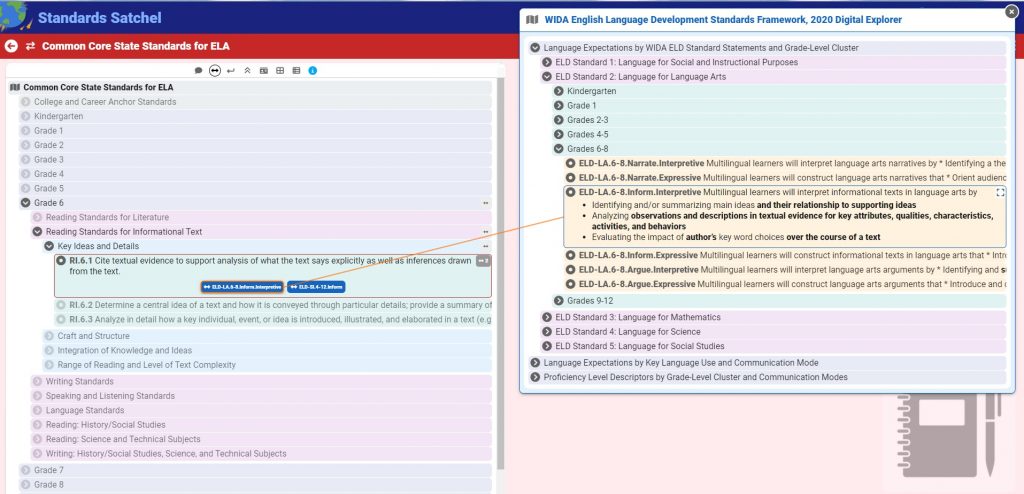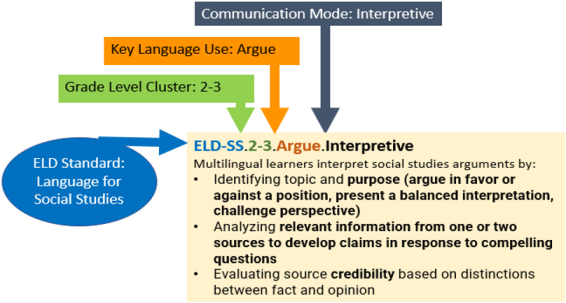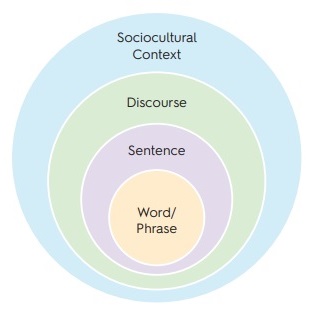Save Time! Streamline Your Unit and Lesson Planning Using the WIDA Standards Digital Explorer
By Lynn Shafer Willner
Saving 10 minutes a day can add up to 30 hours a year.
Are you looking for ways to save time without skimping on the quality of your unit and lesson planning? The digital tools available in the WIDA Standards Digital Explorer and the reference codes in the Language Expectations (e.g., ELD-SS.2-3.Argue.Interpretive) can help you to more efficiently . . .
- Identify unit goals for language development,
- Select matching Proficiency Level Descriptors and/or Language Functions and their associated Language Features for language lesson objectives, and
- Locate standards-aligned digital resources.
In this article, I’ll suggest three time-saving tips for using the WIDA Standards Digital Explorer as part of your design process. If you need a refresher, the article appendix contains an overview of the WIDA English Language Development (ELD) Standard Framework, 2020 Edition.
Table 1. Key Language Uses Across Academic Disciplines
| Genre Family | Definition |
|---|---|
| Narrate | Language to convey real or imaginary experiences through stories and histories. Narratives can serve many purposes, including to instruct, entertain, teach, or support persuasion. |
| Inform | Language to provide factual information. As students convey information, they define, describe, compare, contrast, organize, categorize, or classify concepts, ideas, or phenomena. |
| Explain | Language to account for how things work or why things happen. As students explain, they substantiate the inner workings of natural, humanmade, and social phenomena. |
| Argue | Language to justify claims using evidence and reasoning. Argue can be used to advance or defend an idea or solution, change the audience’s point of view, bring about action, or accept a position or evaluation of an issue. |
After you’ve selected content area and Key Language Use, add the grade-level cluster, look at the Language Expectations in the Standards Digital Explorer to see if they’ll fit with the language uses you had in mind for your unit language development goals. Because the Language Expectations for Standards 2-5 (that is, the Language for English Language Arts (ELA), mathematics, science, and social studies) automatically pair with those from the Language Expectations for Standard 1 (the Language for Social and Instructional Purposes), you should select at least one pair of Language Expectations for each unit.
(Figure 1 shows a pair of Language Expectations selected for a grade 3 unit.)

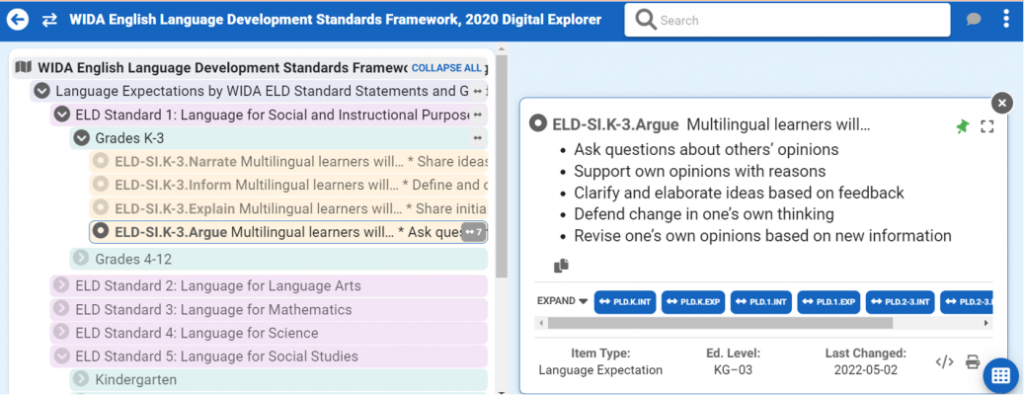
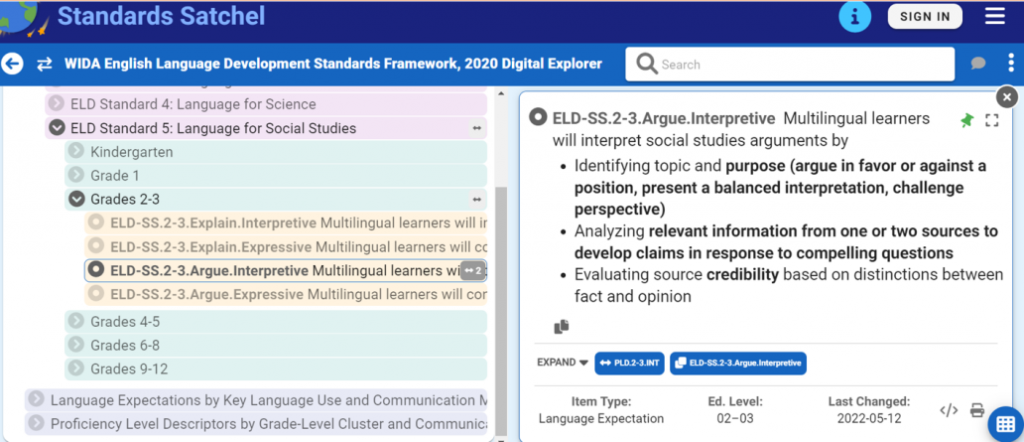
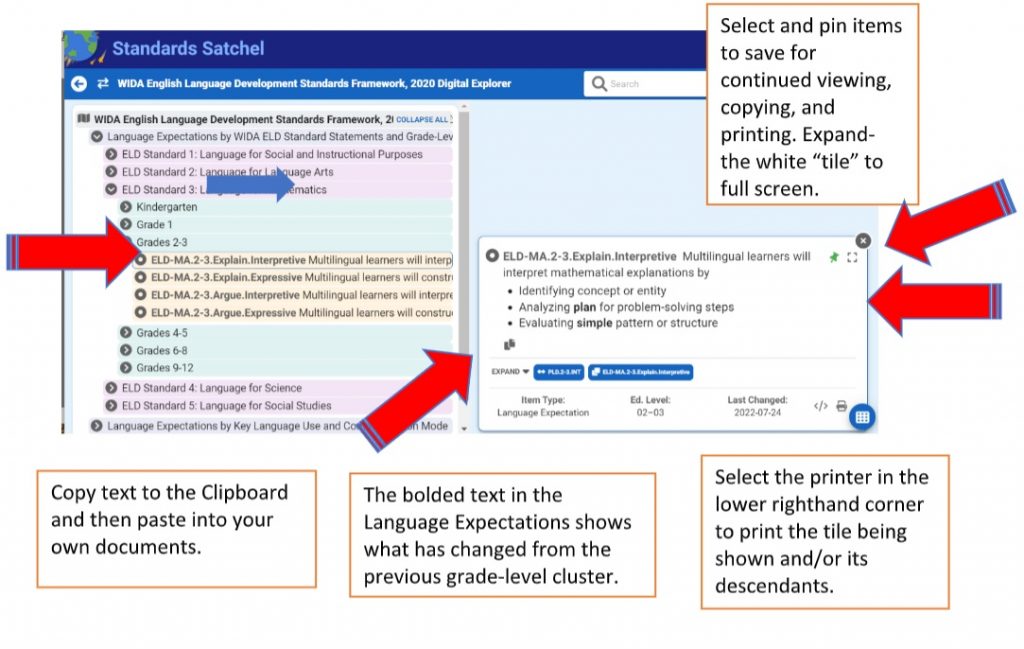

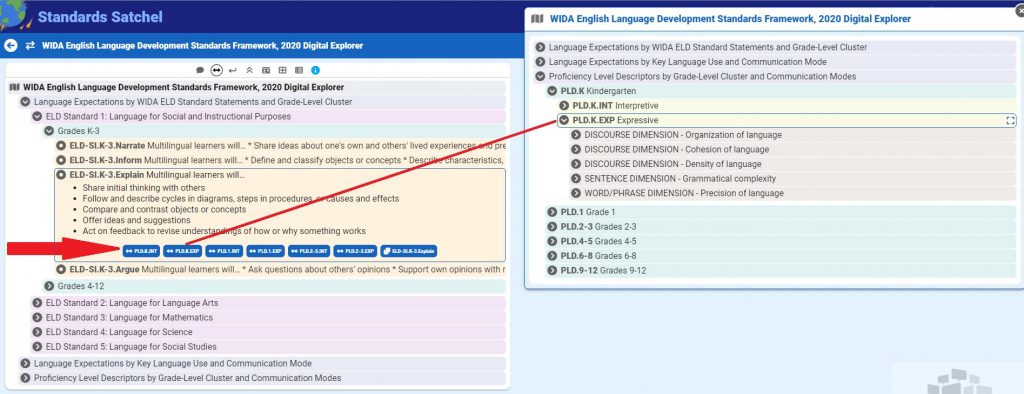
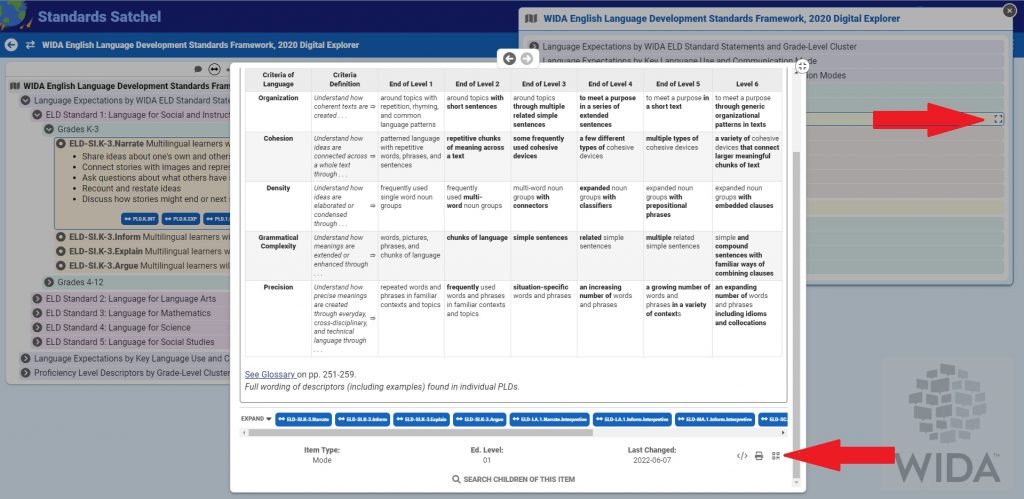
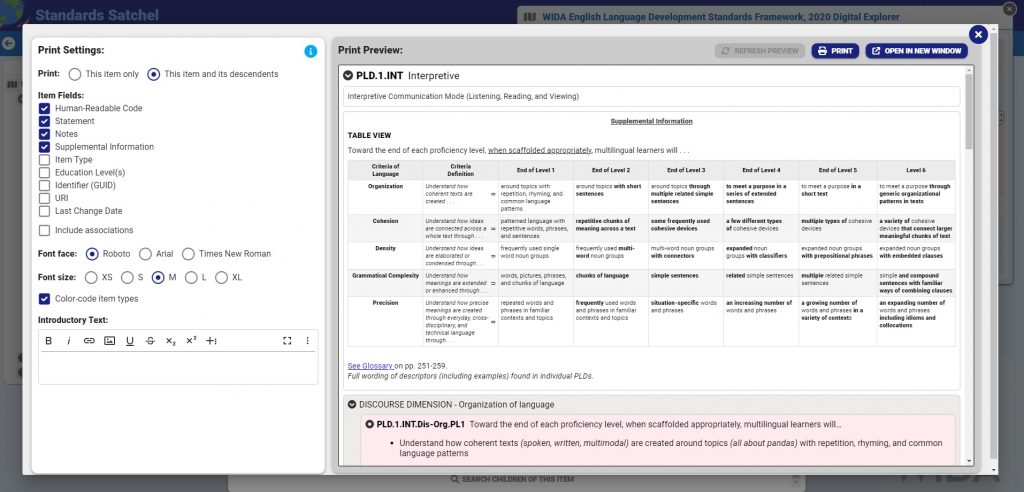
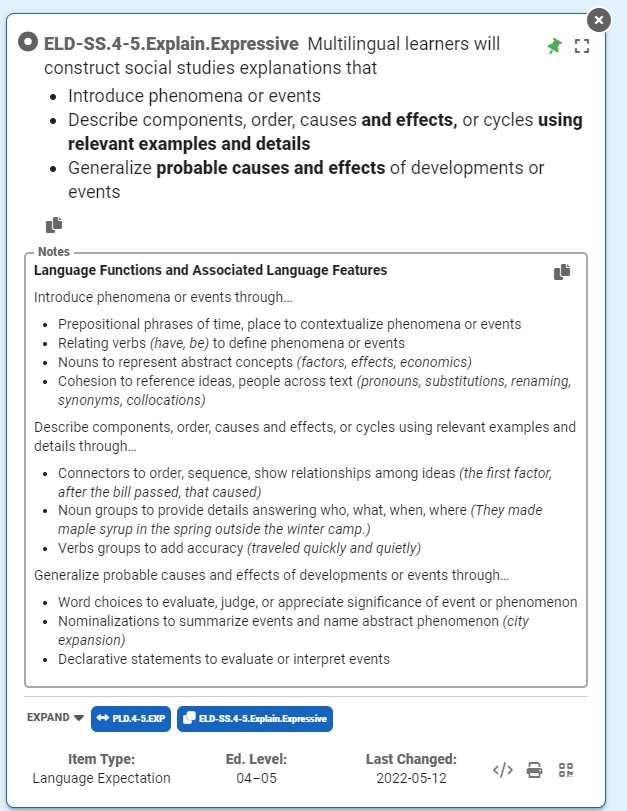
 Figure 8. The Language Expectation Reference Code
Figure 8. The Language Expectation Reference Code